As all good things must come to an end, we are approaching the last days of our amazing African safari. We’re finally going into the renowned Ngorongoro Crater where some 20 black rhinos remain in ‘protective custody’. After that, we’ll be heading to Lake Manyara for a walking safari and some birding before returning to Arusha. We were definitely not looking forward to the 40 hour flight back home…
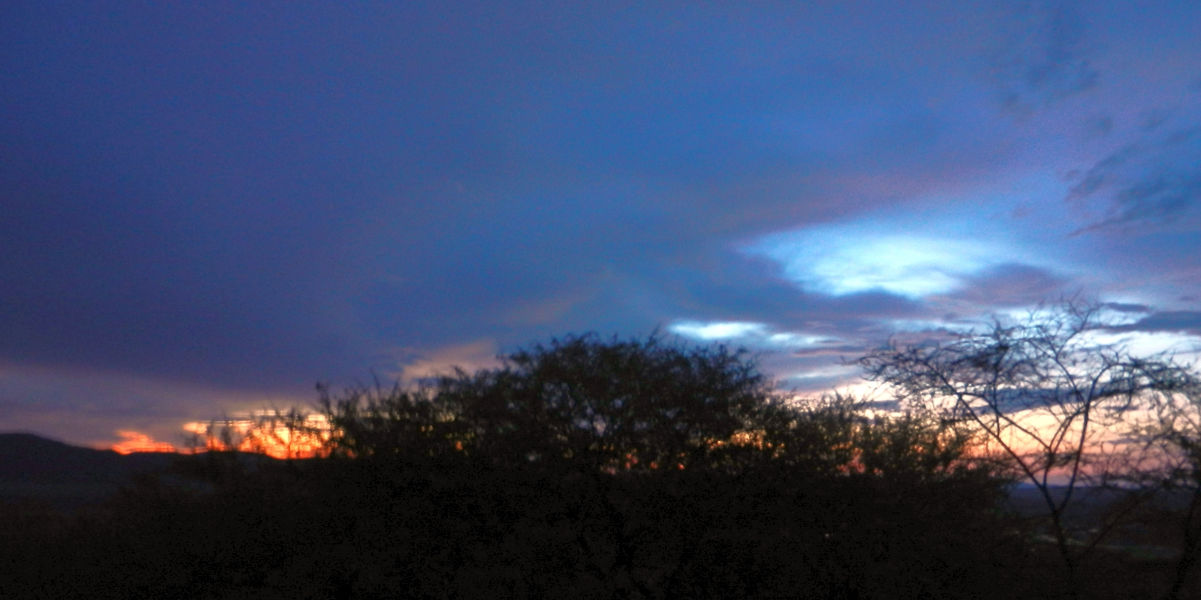
The morning started with breathtaking views at the Ngorongoro Serena Lodge and the vast Ngorongoro crater floor slowly came to life with the breaking dawn. Our game drive into the crater provided sightings of numerous resident wildebeests, zebras, gazelles as well as their predators. We even managed to spot a black rhino with her calf in the distance!
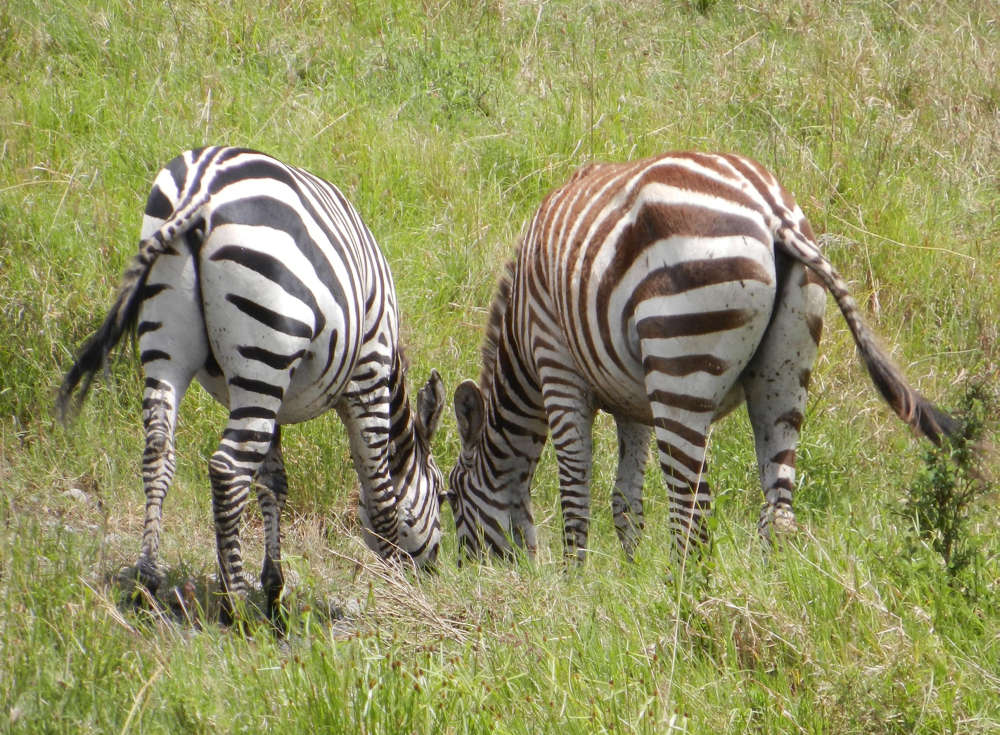
We noticed that while most of the game animals have scant fear of humans on the Serengeti, many are camera shy. Even the normally vigilant zebras turned their backs when they detected our presence, unceremoniously presenting us with their behinds!
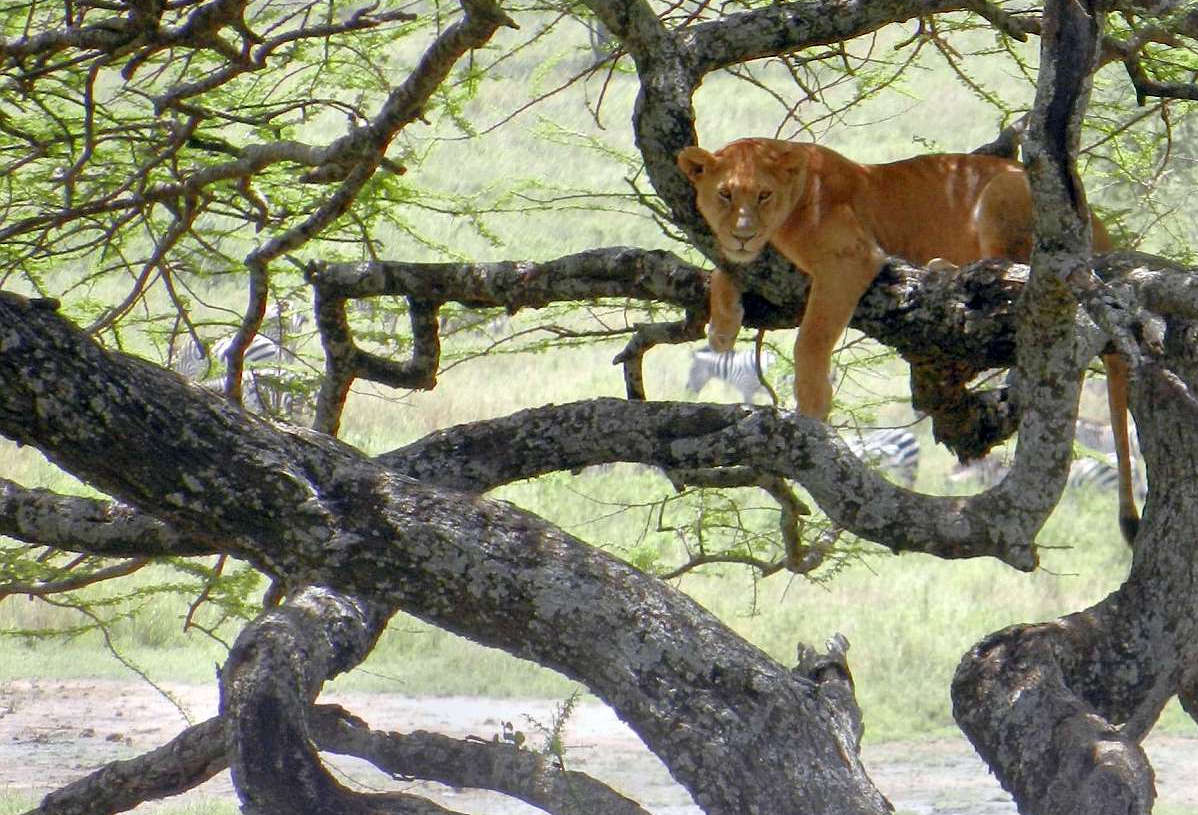
Had to do a double-take on this – we knew Lake Manyara is famous for its tree climbing lions but didn’t expect to see one staring at us from a tree in the Ngorongoro Conservation Area.
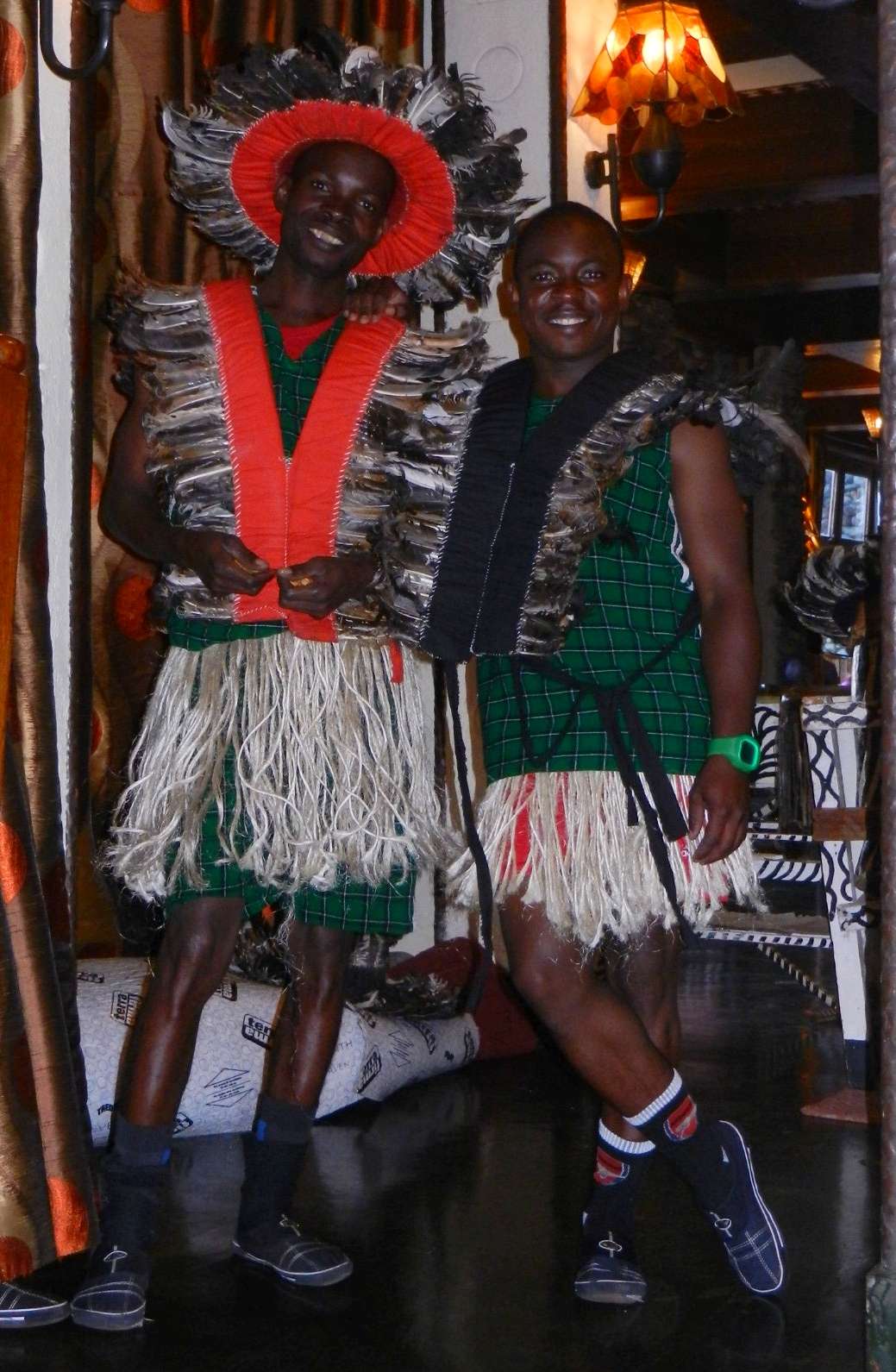
The Ngorongoro Serena Lodge offers cultural performances in the evenings. We came across a couple of affable young men from the troupe dashingly dressed for the part.
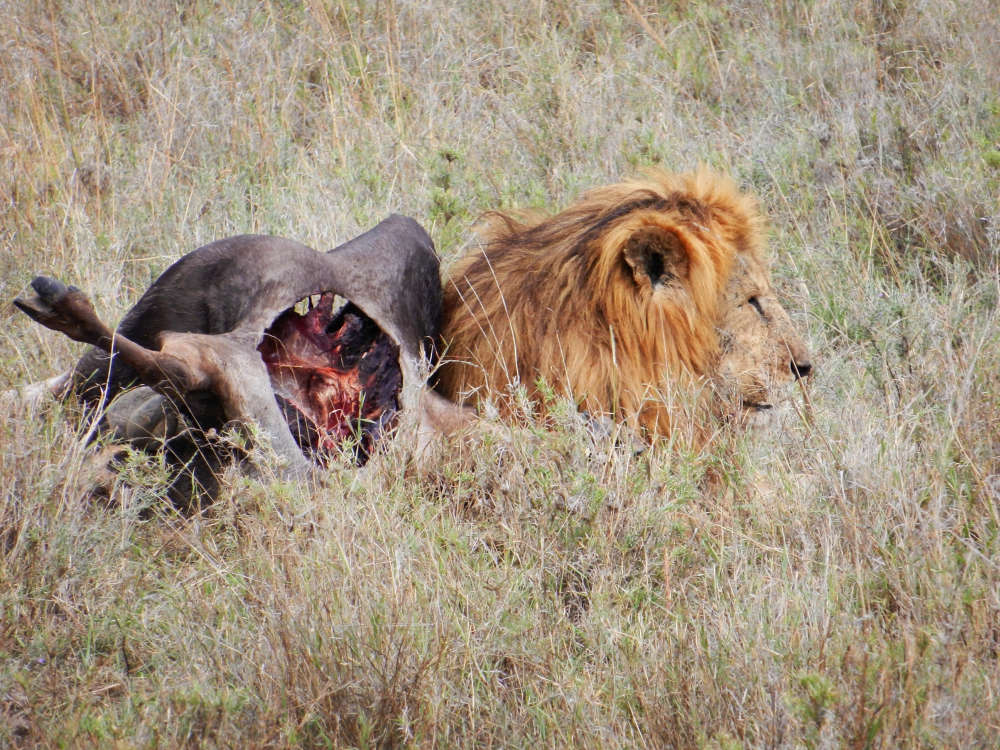
We saw this lion close to the roadside on our way to Lake Manyara. The kill, probably a wildebeest, was from the day prior.
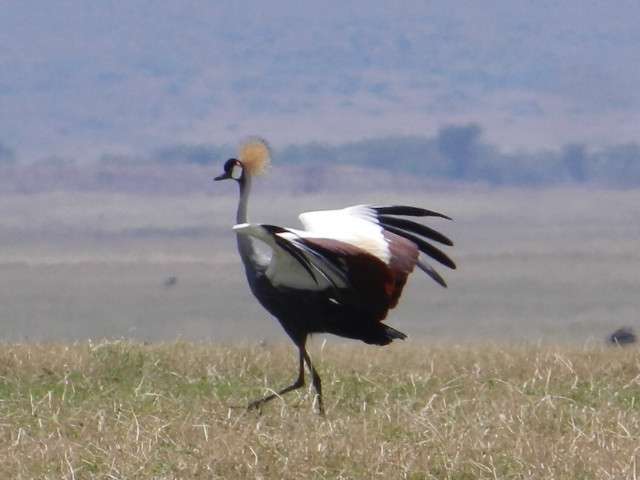
Boasting several hundred species of birds, the lake is a birder’s paradise. We saw crowned cranes, huge flocks of flamingos and numerous kinds of water fowl around the soda lake.

African elephants can eat up to 660 pounds of vegetation a day, so they are constantly grazing or browsing whenever we see them.
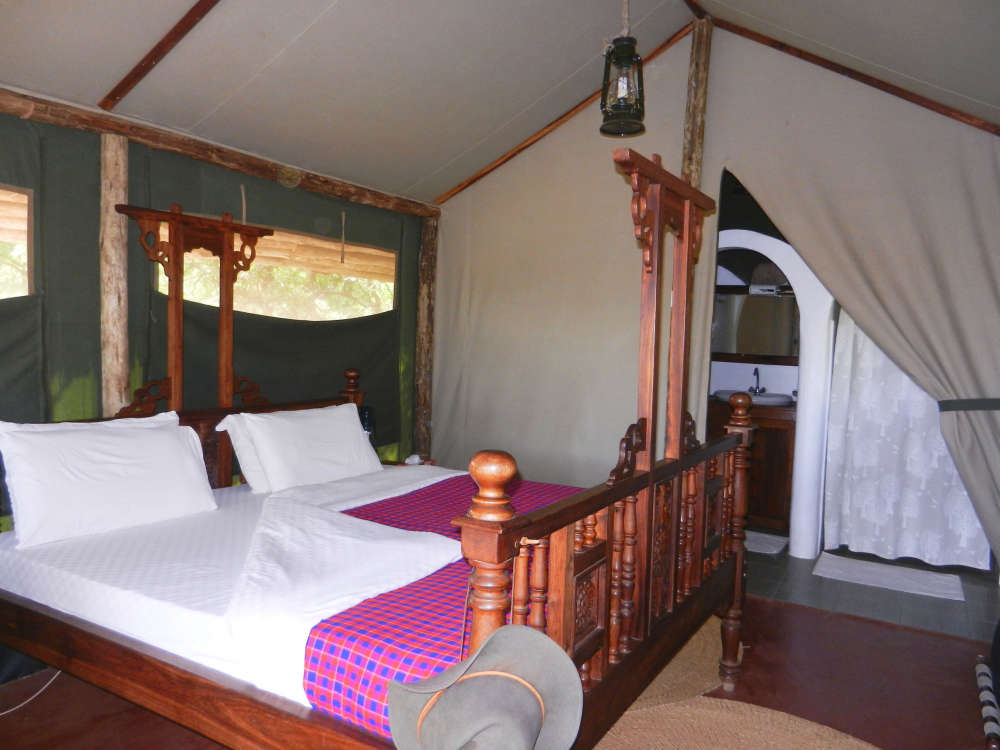
This is a more modest lodge compared to our digs at Buffalo Camp. But the tented camp, spread out along a winding path, offered new opportunities to experience the African bush.
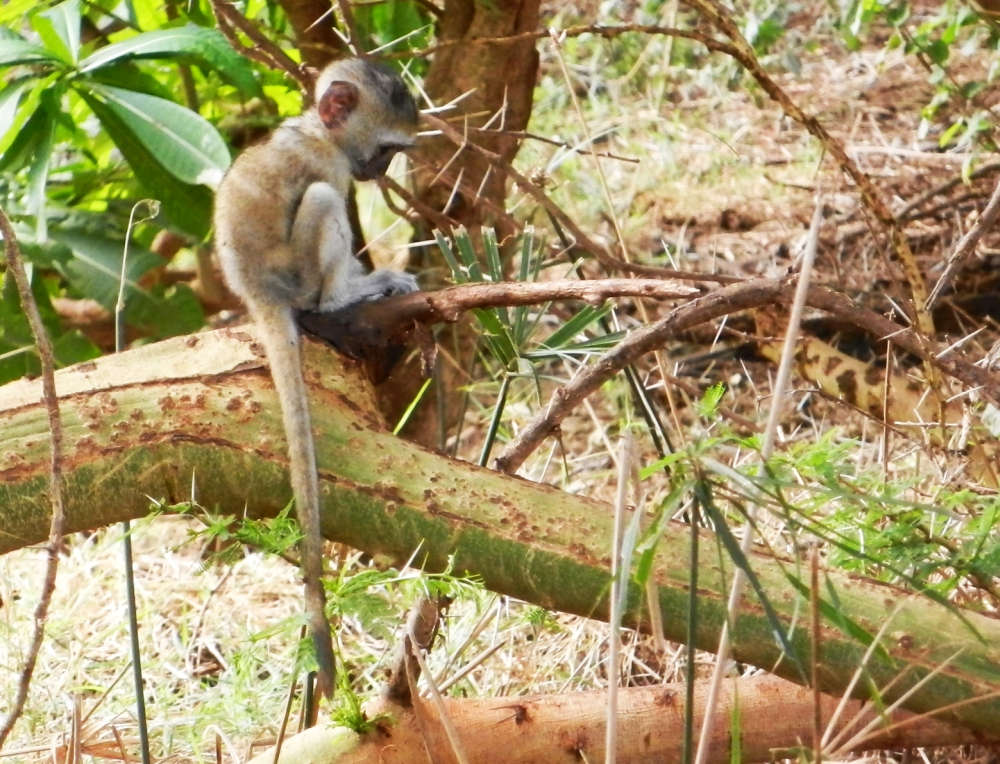
This juvenile monkey looked very woebegone. Vervets are social animals so did he get sent to the corner because it was a bad boy??
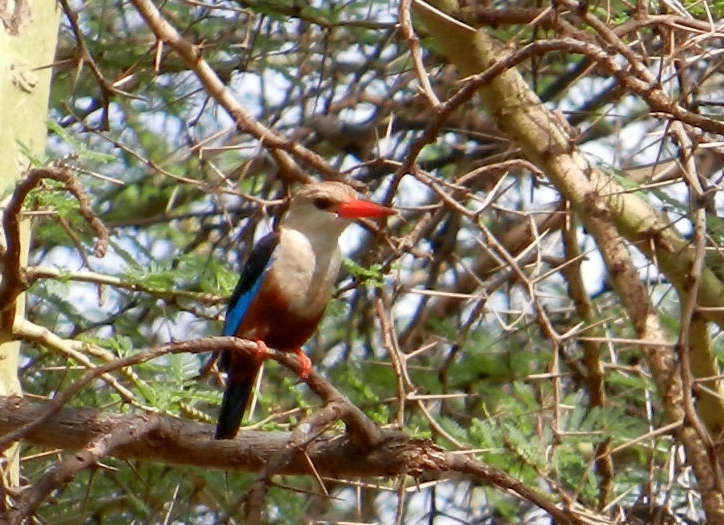
This grey-headed kingfisher is one of the 300 migratory bird species that stop by Lake Manyara. The orange-red beak, chestnut belly and brilliant blue wing feathers make it one of the more striking birds in the area.

We spotted this colorful Nile monitor briefly in Lake Manyara National Park where it was foraging among the forest litter. It’s the second largest monitor lizard in Africa.
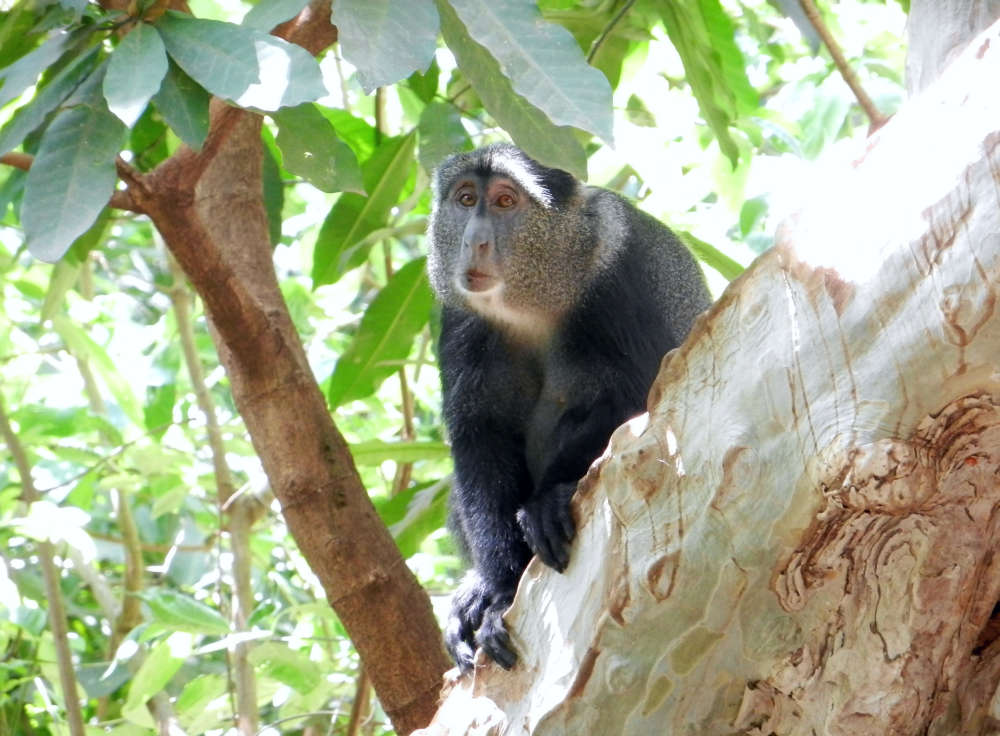
Blue monkeys, which are not actually blue, can be found throughout the area. They’re often seen up in the shade of the canopy.
This video is a fitting finale to our African adventure. Seen for miles in the late afternoon, columns of wildebeest plodded up a hill, starting from the top and winding down slope in an orderly manner, like graduates filing into a stadium. It was a crapshoot trying to catch the wildebeest migration given our itinerary but it paid off with the sight of thousands of animals on the move. Over the course of 8 days we experienced nature in its rawest form as we witnessed the cycle of life and death on the plains of the Serengeti. Beyond a shadow of a doubt, our African sojourn to Madagascar and Tanzania was the trip of a life time!


